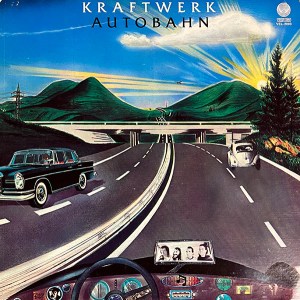Happy New Year from Fuldapocalypse!
The Animal Farm Movie Is (Probably) Even Worse Than It Looks
So a trailer for an “adaptation” of George Orwell’s Animal Farm directed by Andy Serkis and starring Seth Rogen as Napoleon the Pig has been released, with predictable reception.
So the main antagonist, judging by the trailer and gossip, goes from being Pig Stalin himself to a human named…. Pilkington. Using that name makes it all look even worse. Because first off, in the book Mr. Pilkington and his Pinchfield Farm represent the West in general (and Churchill’s Britain more specifically). But even beyond that, the name is obscure, meaning that yes, you’d needed to look at the book and not just grab the rights like what seemingly happened with Starship Troopers.
It gets even worse as one realizes the name is extra-unsuitable given that here Animalism apparently works perfectly until Napoleon is tempted by an Evil Capitalist human. Because in the book, Napoleon actually is tempted with his “Molotov-Ribbentrop Pact” by agreeing to sell timber to Mr. Frederick of Foxwood, who naturally stiffs him and invades anyway.
Yes, Glenn Close’s villainess being named “Pilkington” instead of “Frederick” means that the filmmakers looked at someone who was literally based on Hitler and said “let’s use the stand-in for the west instead because Evil Capitalist Elon Musk Cybertruck Lol.”
Merry Christmas from Fuldapocalypse
Merry Christmas from Fuldapocalypse! Have a winter themed AI picture to celebrate!

A Thousand Words: Red Ape Family
Red Ape Family
NFTs, or “Non-Fungible Tokens”, were one of the most shameless fads of all time. Unlike previous market bubbles like tulip bulbs or Death of Superman comic books, these offered no practical value. In fact, what they even are is hard to explain. The closest normal person equivalent is a receipt.
So normal cryptocurrencies are “fungible” in the sense that as long as they’re in circulation, one dollar bill is functionally the same as another. Non-fungible means distinct, like say, an explicit receipt. Why would you spend a million dollars on a receipt for a transaction of a picture of a badly drawn monkey? The answer is a combination of get-rich suckers and wash trading (despite the name, not directly money laundering).
But I digress. So Red Ape Family, about a family of bored red apes who steal a drive full of the most valuable NFTs and go to Mars, is…. to call it a toy commercial would be an insult to toy commercials. More like a get rich quick infomercial made by someone with no talent whose sense of humor was a single episode of later Family Guy.
The existence of this is more interesting than any of the “gags” itself.
Viola Air Is Released!
My newest book, Viola Air, is now out.
I’m excited, writing it was the smoothest experience I’ve had in a long time. 2025 actually saw me able to write and complete two full-length books in one year, something I hadn’t managed before. So enjoy this pop epic of a plane factory in Ohio!
Review: Labyrinth
Labyrinth
An early Jon Land novel that somehow escaped my eye until now, Labyrinth has every note I know him for. There’s a super conspiracy with super weapons to take over the world, infighting within said super-conspiracy, and a crazy plot that ends in a crazier set piece (this one involves old warbird propeller planes).
This by Jon Land’s standards isn’t the best simply because it’s too conventional. If this was my first Land book I’d probably have loved it more, but I know he can do goofier (and thus better) in hindsight. Oh well.
What really brought down general aviation
I was looking at histories and such concerning the post-WW2 decline of general aviation in America. Most of the stated reasons center around costs, regulation, lawsuits, and changing demographics. None of these I’m denying were factors, even major ones. But I came across something that was very eye-opening and was not mentioned in most of the usual ones.
That was the decline in its practicality. One amusing side-part of the “flying car” discourse is that in a way, in the early postwar period, flying cars in the way we think of them kind of existed. See, in the early postwar period, as long as you could afford something that still always cost at least the equivalent of six figures today just for the airframe (ie you were a rich professional), flying in your own aircraft over the Depression-adjacent countryside was frequently the quickest and most convenient way to get from point A to point B. Whether it was for the luxury of a getaway or the necessity of business travel, there was a practical use.
Later on this eroded with two big things, which I shall provide graphical illustrations of.


Yep, better roads and better, cheaper, and more accessible commercial air travel. Which meant a lesser actual need for private planes, which naturally had giant ripple effects. At the very least it’s an underappreciated piece of the pie.
The A Button Challenge
Mario was originally known as “Jumpman” in the first releases of Donkey Kong. Super Mario Bros. defined the platformer. What I’m trying to say is that Mario jumps. Until now.
For 20+ years, an array of gamers dug deep into the code of Super Mario 64 to see in how few A presses (jumping) they could beat the game. Last year, a successful run with zero presses was finally accomplished.
Numerous stars and even entire levels had to be skipped entirely as they required jumping. The centerpiece that enabled the final “A”-less run to be performed involved playing on Wii Virtual Console and using an emulator/porting glitch that had platforms in the Bowser in the Fire Sea stage moving sloooooowly upwards over time. The game had to be run for three real-time days to let them get into place.
Yet in the greatest human accomplishment since the moon landing, the A Button Challenge was finally completed.
Review: Speedrunning
Speedrunning: Interviews With The Quickest Gamers
David Snyder in Speedrunning tackles the titular way of playing video games. It looks good on paper, interviewing numerous champion speedrunners and explaining how the basics work. The problem is its format and layout. It’s like trying to play Dark Souls on a drum set, and he doesn’t quite manage it.
So this first consists of explanations of speedrunning, which are a little cookie-cutter but still essentially accurate for an absolute beginning. Then Snyder gets to interviewing speedrunners, which isn’t really the best way to go about it. I might be a little stereotypical, but speedrunners are a group not generally known for their wit or sociability. More importantly and specifically, the interview subjects go straight into huge technical details which contrast with the basics given elsewhere in the book. I don’t blame them, but I blame Snyder for not integrating it better.
A bigger problem is that it’s using text to describe a visual medium. There’s no shortage of speedrun history/explanation videos , and almost all of the record speedruns themselves can be easily seen. Reading a book about it simply can’t compare, even if Snyder was a lot better. So that’s why I can’t recommend this.
A Thousand Words: NARC
NARC
The 1988 Williams arcade game NARC is probably the most 1980s piece of interactive media developed. Playing as super-cops in biker helmets Max Force and Hit Man, you blast your way through a drug empire of hobos, dealers, weed-growing Rambos, prostitute-kidnapping clowns, henchmen who couldn’t decide if they wanted to dress like mobsters or construction workers, and attack dogs, ruled by a giant biomechanical head-worm. None of that is exaggerated or false.
There is nothing subtle or easy about this game. It’s meant to have you win solely by pushing in quarters. (Who’s the addiction inducing dealer now?) But it is fun and is well, incredibly 1980s.
